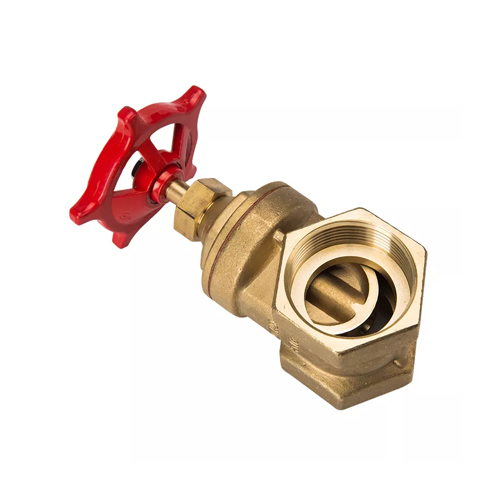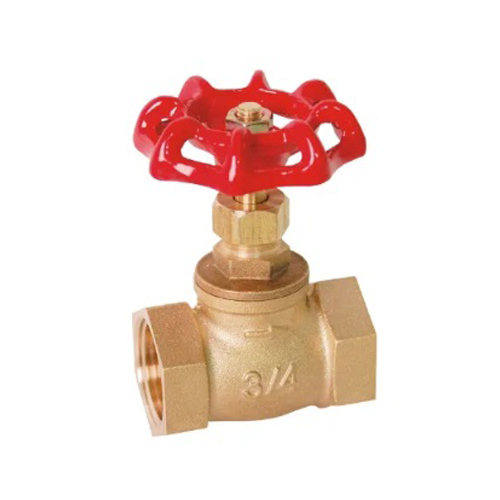In various industries such as oil and gas, chemical processing, and water treatment, valves play a crucial role in controlling the flow of liquids and gases. One of the most commonly used types of valves is the globe valve, known for its precision in throttling and flow control. As a trusted valve manufacturer, Hoson produces a wide range of high-quality globe valves designed to meet the specific needs of industrial applications. In this article, we’ll dive into the technical features of globe valves and explore how they can provide significant operational advantages in various systems.
What Is a Globe Valve?
A globe valve is a linear motion valve used to start, stop, or regulate flow. Named for its spherical body shape, this valve type is well-regarded for its ability to offer precise flow control. The globe valve achieves this by using a movable disk (or plug) and a stationary ring seat in a generally spherical body. When the valve opens, the fluid or gas flows in a straight path, while the flow rate can be finely adjusted by moving the plug.
Key Components of a Globe Valve:
Body: Typically spherical, but can vary in shape.
Disk/Plug: A movable element that allows or restricts flow.
Seat: A stationary part where the plug fits when the valve is closed.
Stem: Connects the actuator or handwheel to the plug and moves the plug up or down.
Bonnet: Covers the valve body and protects internal components.

Technical Features of Globe Valves
1. Flow Control Precision
One of the standout technical features of a globe valve is its excellent throttling capability. Unlike gate valves, which are typically used for fully open or closed positions, globe valves can be finely adjusted to control flow rates. This makes them ideal for applications requiring precise flow regulation, such as in steam or cooling water systems.
At Hoson, we manufacture globe valves with a Cv range (flow coefficient) from 1.0 to 100, depending on the valve size and material. For example, a 2-inch globe valve typically has a Cv of about 50, allowing it to regulate fluid flow effectively in moderate to high-pressure systems.
2. Pressure Rating and Temperature Resistance
Globe valves are designed to withstand a wide range of pressures and temperatures, making them suitable for various industrial environments. The pressure rating of a globe valve is crucial in determining the types of applications it can be used in.
At Hoson, our globe valves are rated for pressures up to 600 PSI (pounds per square inch) for standard models, with some specialized designs capable of handling pressures as high as 1,500 PSI. These valves can also operate effectively in temperatures ranging from -20°C to 400°C, making them suitable for handling both cryogenic fluids and high-temperature steam or gas applications.
3. Material Selection
The choice of material for a globe valve is critical for ensuring its durability and compatibility with the media being controlled. Hoson offers a variety of materials, including carbon steel, stainless steel, bronze, and cast iron, to meet the specific requirements of different industries.
Stainless steel globe valves are ideal for corrosive environments, such as chemical processing plants, due to their resistance to oxidation and rust. These valves are particularly useful for regulating acidic or caustic liquids.
Bronze valves are commonly used in lower-pressure applications and are often seen in water distribution systems due to their good wear resistance.
Carbon steel valves are favored for high-pressure and high-temperature systems, such as those found in oil and gas pipelines.
The design and materials of the valves at Hoson ensure optimal cost performance by delivering durability and efficiency over extended periods, reducing the need for frequent replacements or repairs.
4. Bonnet Design
Globe valves come with several different bonnet designs to accommodate various service needs. The three most common bonnet types are bolted, screwed, and pressure-sealed bonnets. Each has distinct advantages:
Bolted bonnets: These are easy to disassemble, allowing for straightforward maintenance and repairs. They are widely used in applications requiring periodic inspection.
Pressure-sealed bonnets: Used in high-pressure applications, these bonnets are designed to become tighter as the pressure inside the valve increases, offering additional safety and performance under extreme conditions.
Screwed bonnets: Often used in smaller, low-pressure globe valves, screwed bonnets offer a cost-effective and simple solution for applications that don't require frequent maintenance.
5. Flow Characteristics
The flow path in a globe valve is generally S-shaped, which creates more resistance compared to straight-through flow valves like gate or ball valves. While this design inherently causes a higher pressure drop, it also provides more precise control over flow rates. In most systems, the pressure drop is not significant enough to outweigh the control advantage of a globe valve.
For example, a 3-inch globe valve operating at 150 PSI will typically experience a pressure drop of about 15-20 PSI under full flow conditions, which is acceptable for most industrial applications where precise flow control is prioritized over minimal pressure loss.
Installation and Maintenance Considerations
1. Installation Orientation
Proper installation of a globe valve is key to ensuring optimal performance. The direction of the flow should be aligned with the arrow marked on the valve body, which indicates the correct flow direction. Installing a globe valve in the wrong orientation can lead to increased wear on the valve disk and seat, shortening the lifespan of the valve and potentially leading to leaks.
2. Regular Maintenance
Globe valves require regular maintenance, especially in high-pressure and high-temperature environments. Periodically inspecting and cleaning the valve internals helps maintain smooth operation. Hoson recommends a maintenance schedule that includes:
Inspecting the disk and seat for wear and tear every 6 months.
Checking for leaks around the bonnet and stem.
Lubricating the stem to ensure smooth operation of the valve.
Replacing worn-out seals and gaskets can prevent leaks and maintain optimal performance. For industries with more aggressive media, such as chemical plants, maintenance may need to be performed more frequently to ensure the valve remains in good working condition.
3. Compatibility with Automation
Many globe valves can be automated using electric or pneumatic actuators, making them ideal for use in complex industrial systems that require remote or automated control. Hoson offers OEM/ODM solutions to customize globe valves with automation options for specific client needs, enhancing the operational efficiency of large-scale systems.

Conclusion
Globe valves are essential components in systems that require precise flow regulation and control. With their wide range of applications, from handling high-pressure steam to controlling the flow of chemicals, globe valves offer unparalleled flexibility and reliability. Hoson takes pride in being a top supplier of high-performance globe valves, delivering top-tier durability, efficiency, and customization options to meet the demanding needs of various industries.
By understanding the technical features of globe valves and maintaining them properly, businesses can ensure smoother operations, longer equipment life, and optimized cost performance in their systems.



